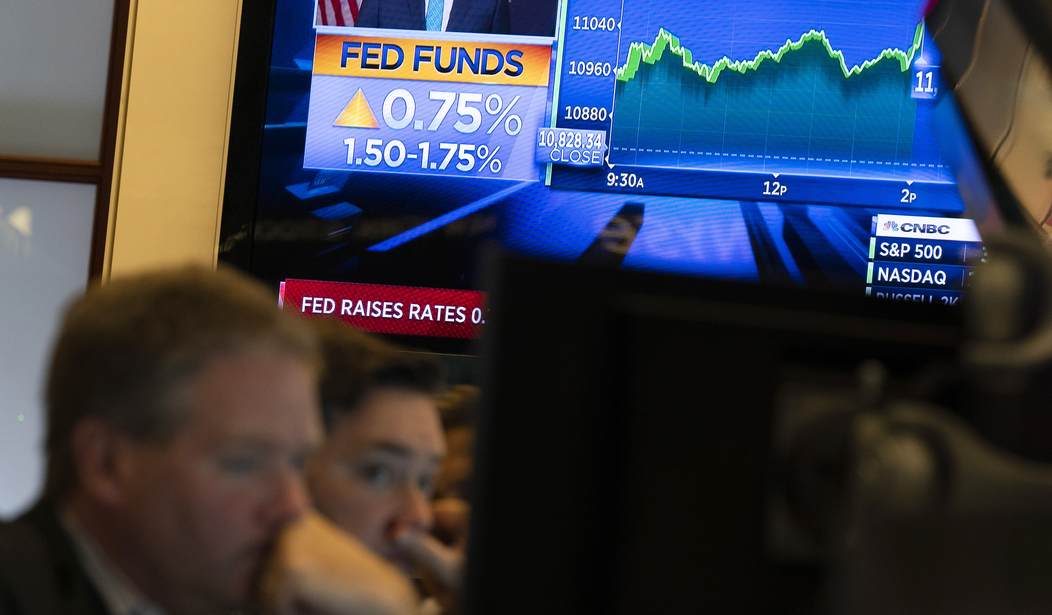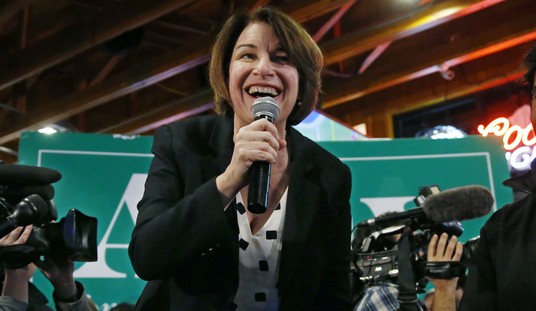You know the definition of insanity? Doing the same thing, and, you know, the thing...
Most of the columns I write for RedState are on the economy. I write about trade, energy, drugs, etc. My most recent piece is on inflation, and you can read it here. I have another riff on the subject of inflation that I want to share with you. I hope you'll indulge me.
I would say since the beginning of the end of COVID, say mid-'21 to mid-'22, the word probably used more than any other word, is perhaps inflation.
Today, for example, I can recommend this piece in Barron's by Mark Penn. He, too, addresses the issue and its relationship to the things he and I both agree were all due to COVID. He gets half the story right.
Federal Reserve policy today is simply misguided. It reminds me of bloodletting as a cure for diseases—sometimes it worked but always at the expense of the patient’s health.
So far, so good. And then he says:
Let’s understand what happened. The pandemic did two things as far as the Fed is concerned. It shut down select industries including transportation, creating supply bottlenecks. And it enabled large numbers of people who remained employed to increase their savings, since they eliminated most of their daily routines such as commuting and eating out. Money piled up in their accounts with excess savings peaking at over $2 trillion.
Excess savings? I know where this is going. We are going to now hear about pent-up demand.
The result of this combination of pandemic-related changes, increased savings, pent-up demand and fiscal irresponsibility was runaway inflation. The consumer price index broke 9% in summer 2022. This outcome was the logical result of these policies. Economists like Larry Summers foresaw it, even as the current secretary of the treasury tried to play it all down as transitory and not much to worry about.
Larry Summers even saw it. A former US Treasury Secretary saw this train coming. Oh, my. Who didn't see this economic shutdown leading to a massive economic disruption? You know what economic disruptions disrupt? Supply, demand, energy distribution, transportation, and ultimately, prices.
As John Tamny wrote about this, perhaps more consistently than anyone, inflation isn't necessarily the only explanation for rising consumer and producer prices.
Indeed, from loquacious politicians to prolific pundits to pessimistic economists and academics, it has been argued that the COVID checks are at the heart of the matter vis-a-vis inflation.
But it isn’t true.
The $11-plus trillion, or whatever the actual amount is, almost certainly had little to no significant impact one way or the other on consumer prices, except that federal spending is a tax on the economy. And that means fewer economic efficiencies throughout the economy for as far as the eye can see. Again, expect more disruption.
Allow me to make a different case. And this isn't by any means my case alone; this case has been made by others, too, including Jeffery Tucker in his book, "Liberty or Lockdowns," and of course John Tamni in his brilliant work, "When Politicians Panicked."
A few things are to blame for the price spikes we've all seen over these last few years.
First, the economic lockdown severed global supply chains, distribution systems, transportation networks, just-on-time delivery protocols, etc. In other words, the economic lockdowns have had a profoundly negative impact on price stability because, in addition to interfering with the national and international division of labor and capital, they wreaked havoc on the global economy.
Second, the increase in global energy prices has also driven prices up. This is due to an obvious fact of modern life: energy is at the foundation of the American and global economy.
Everything that moves depends on energy. Everything we buy must be driven, shipped, moved by rail, or flown. Higher energy prices reverberate through the entire economic system, causing prices to rise as energy costs rise.
But this still isn't inflation.
The third cause of the higher prices is the trade war that was started by the former White House in April 2018.
In a nondeferential way, we tested the laws of economics. The White House decided to raise tariffs on steel, aluminum, and various other goods we import from China, Mexico, Europe, India, etc, and expected no economic fallout as a result. This was done as part of an "America First" trade policy. It's based on the belief that when it comes to trade, it is a zero-sum game. If one side wins, the other side loses.
Indeed, the 2018 trade war was described by the White House as "easily winnable," and a positive thing for America. But, in reality, trade wars are not easy to win; they are impossible to win. And the ultimate victims of trade wars, as one country retaliates against the other, are domestic producers and consumers of goods and services. We suffer by paying more for the things we all buy every day.
Steel provides a great example. According to Phil Gramm, a former presidential candidate and US Senator from Texas, for every American employed making steel or aluminum in 2018, 36 were employed by firms that used steel or aluminum as inputs.
By the way, US producers are also consumers. Moreover, domestic importers are also domestic exporters. Sometimes our industries import so that they can export. And while doing those simultaneously, they get hit with our own tariffs numerous times as part of their doing business.
In other words, tariffs that drive up retail and wholesale prices in an effort to protect politically well-connected domestic industries hurts the American economy more than it hurts foreign governments.
The catastrophic mistake of shutting down the economy due to a virus, coupled with the wrongheaded decision to impose energy scarcity through regulatory schemes and politically correct virtue signaling born from ideological nitwittery, combined with higher tariffs, together created a perfect storm of economic disruption and are the primary reasons for what everybody calls "inflation."
Except that, again, it isn't inflation.
It is a rising price level driven by these underlying factors. The higher prices in the economy have nothing to do with a devaluation of the dollar because there has been no devaluation of the dollar. The US dollar remains the strongest currency in the world. And there is no evidence that it is being devalued.
Moreover, the cost of an ounce of gold has been falling consistently since May of this year. A rising gold price is your first sign of a troubled dollar.
So, look no further than the 2020/21 lockdowns, Biden's energy scarcity, and the 2018 trade war as the main culprits for the amount you’re paying at the gas pump, the grocery store, and other checkout stands. And let's pledge our sacred honor to change course immediately, and make a vow to never repeat these mistakes again.















Join the conversation as a VIP Member